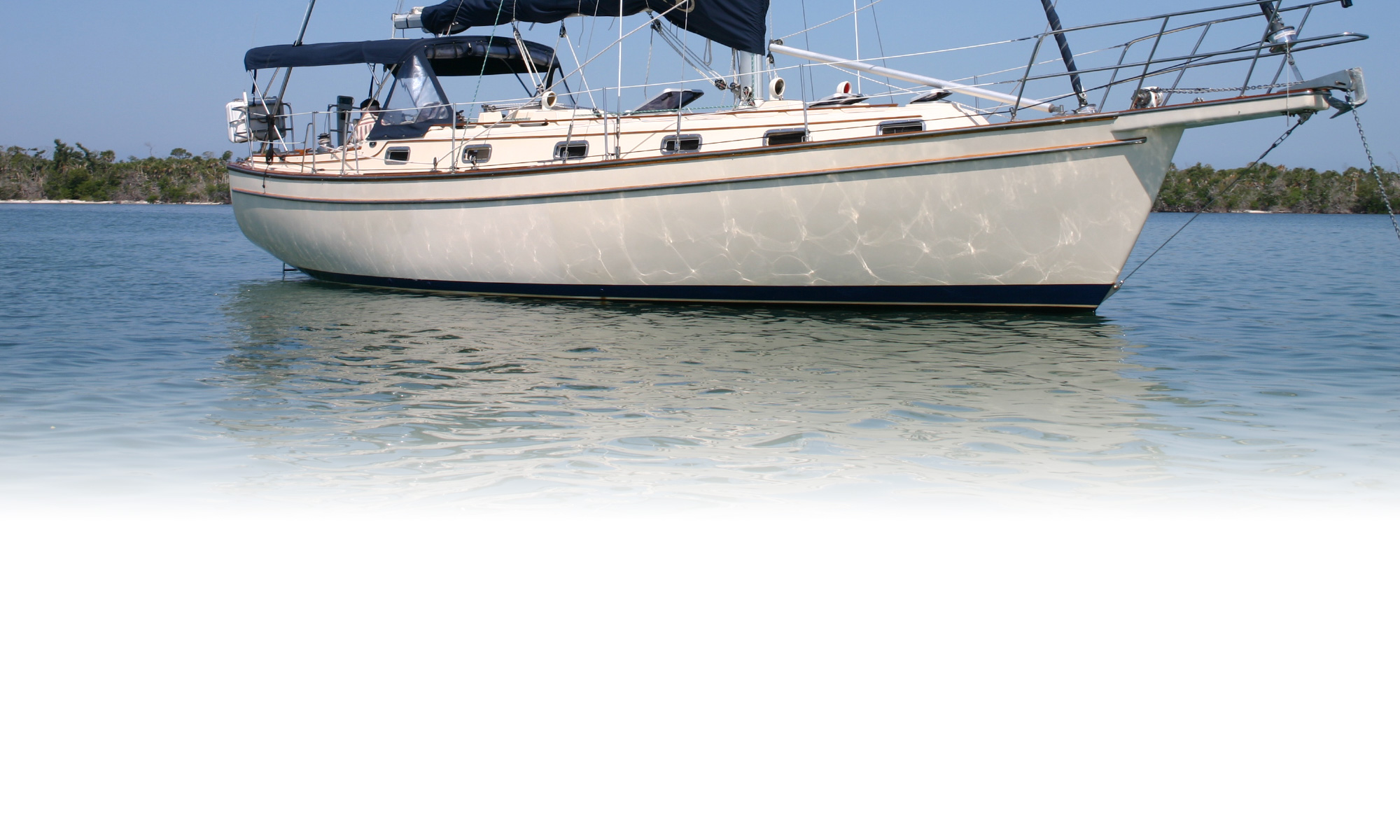Sailboats steer by means of the rudder, a vertical, blade-like projection mounted either on the transom (the flat surface of the stern) or under the sailboat. In both cases the rudder works by deflecting water flow: when the helmsman—the person steering,—pivots the rudder, the water hits it with increased force on one side, decreased force on the other. The rudder moves in the direction of lower pressure. As the rudder goes, so goes the stern, and the boat turns.
Steering
During turns the boat pivots around a point near its center—roughly at the mast on a sloop. The stern moves one way, the bow moves the other way, as the boat changes direction. In very close quarters it’s important for the helmsman to remember this, and make allowances for the swinging stern to avoid colliding with other boats, docks, buoys, etc. Quite a few sailors make this mistake, but often not more than once.
Tiller vs Wheel
Most smaller sailboats (under 30 feet or so) use a “tiller” to turn the rudder. This is basically a stick made of wood or, sometimes, aluminum, attached to the top of the rudder. The tiller provides leverage to turn the rudder against the strong pressure of the water moving across it. This pressure can be substantial, therefore even on a small sailboat the tiller is up to three or four feet in length; in strong winds the helmsman may often wish it was even longer. Larger boats generally use a wheel, attached to the rudder by cables and a steel “quadrant” to provide sufficient leverage. While steering with a wheel takes less effort, a tiller is better for beginning sailors, since it provides instant response and feedback: if the sails are trimmed incorrectly, the skilled helmsman will feel it through the tiller. Because of this, some expert racing sailors prefer a tiller, even on large sailboats.
The continuous stress and pressure on the rudder underscores why sailors should practice regular rudder inspections and maintenance. If you need a rudder repair or a replacement rudder or centerboard for your sailboat, please contact us today.
